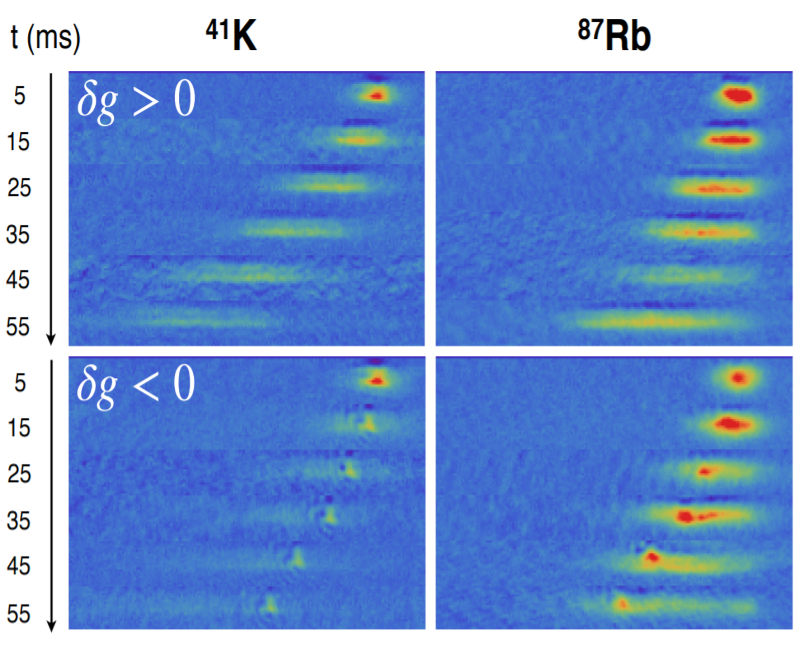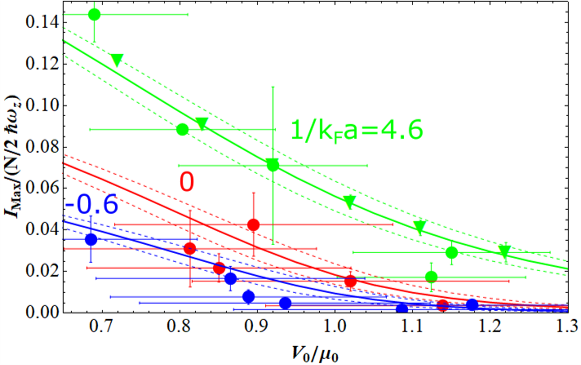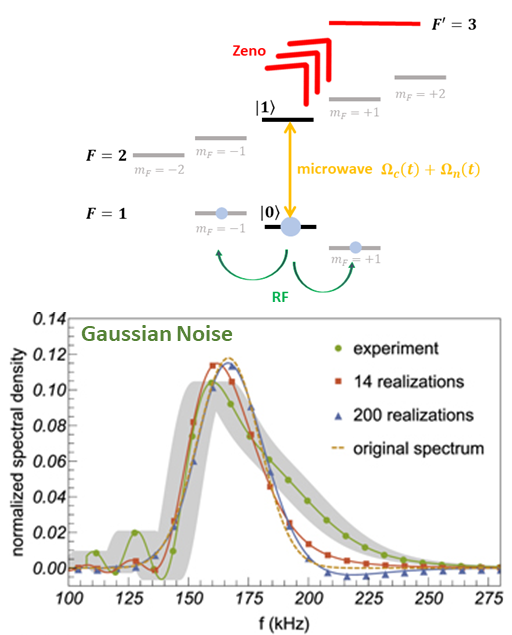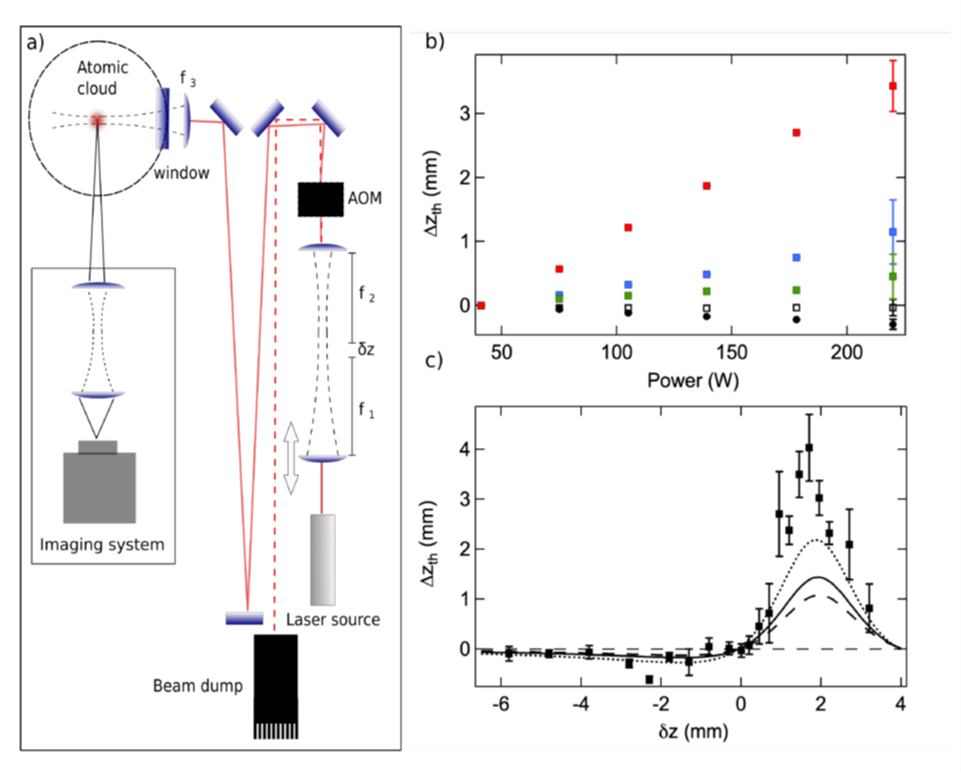 |
We report on the formation of heteronuclear quantum droplets in an attractive bosonic mixture of 41K and 87Rb. We observe long-lived self-bound states, both in free space and in an optical waveguide. In the latter case, the dynamics under the effect of a species-dependent force confirms their bound nature. By tuning the interactions from the weakly to the strongly attractive regime, we study the transition from expanding to localized states, in both geometries. We compare the experimental results with numerical simulations and we find a good agreement in the full range of explored interactions. C. D'Errico et al. |
LAST NEWS
 |
Together with Wilhelm Zwerger, we developed a simple analytic model to quantitatively describe the Josephson tunneling between two Fermi superfluids along the entire BCS-BEC crossover. Our work just got published in Phys. Rev. A. M. Zaccanti, W. Zwerger, |
 |
The ideal quantum Zeno effect is a robust method to protect the coherent dynamics of a quantum system. In particular , in the weak quantum Zeno regime, repeated quantum projective measurements can allow the sensing of semi classical field fluctuations. We report our proposal and demonstration, both theoretical and experimental, of a novel noise sensing scheme enabled by the weak quantum Zeno regime. We experimentally tested these theoretical results on a Bose Einstein Condensate of 87Rb atoms realized on an atom chip, by sensing ad hoc introduced noisy fields. H.–V. Do et al., |
 |
We devised a simple, totally passive scheme that enables to realize an inexpensive optical trapping apparatus free from thermal lensing effects. Our work just got published in Optics Express. C. Simonelli et al., |
 |
The paradoxical supersolid phase of matter has the apparently incompatible properties of crystalline order and superfluidity. A crucial feature of a one-dimensional supersolid is the occurrence of two gapless excitations reflecting the Goldstone modes associated with the spontaneous breaking of two continuous symmetries: the breaking of phase invariance, corresponding to the locking of the phase of the atomic wave functions at the origin of superfluid phenomena, and the breaking of translational invariance due to the lattice structure of the system. We demonstrate the supersolid nature of the coherent stripe regime we discovered in dipolar Bose-Einstein condensates. In our trapped system, the symmetry breaking appears as two distinct compressional oscillation modes, reflecting the gapless Goldstone excitations of the homogeneous system. We observe that the two modes have different natures, with the higher frequency mode associated with an oscillation of the periodicity of the emergent lattice and the lower one characterizing the superfluid oscillations. Our work paves the way to explore the two quantum phase transitions between the superfluid, supersolid and crystal-like configurations that can be accessed by tuning a single interaction parameter.
L. Tanzi, et al. See also the Nature News and Views by S. M. Mossman: S. M. Mossman, Sounds of a supersolid detected in dipolar atomic gases for the first time and the Nature Physics research highligh by Y. Li: Y. Li, The buried trace |
